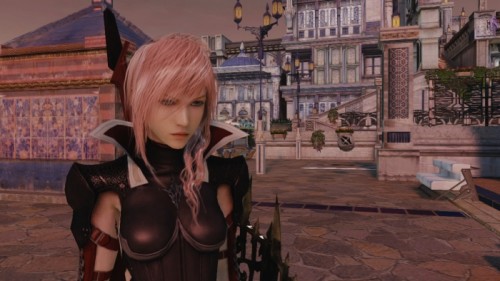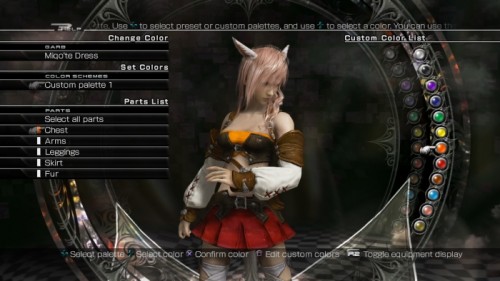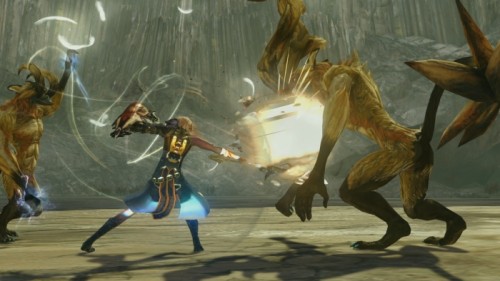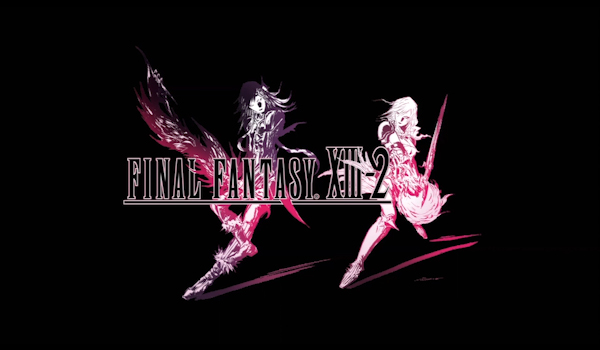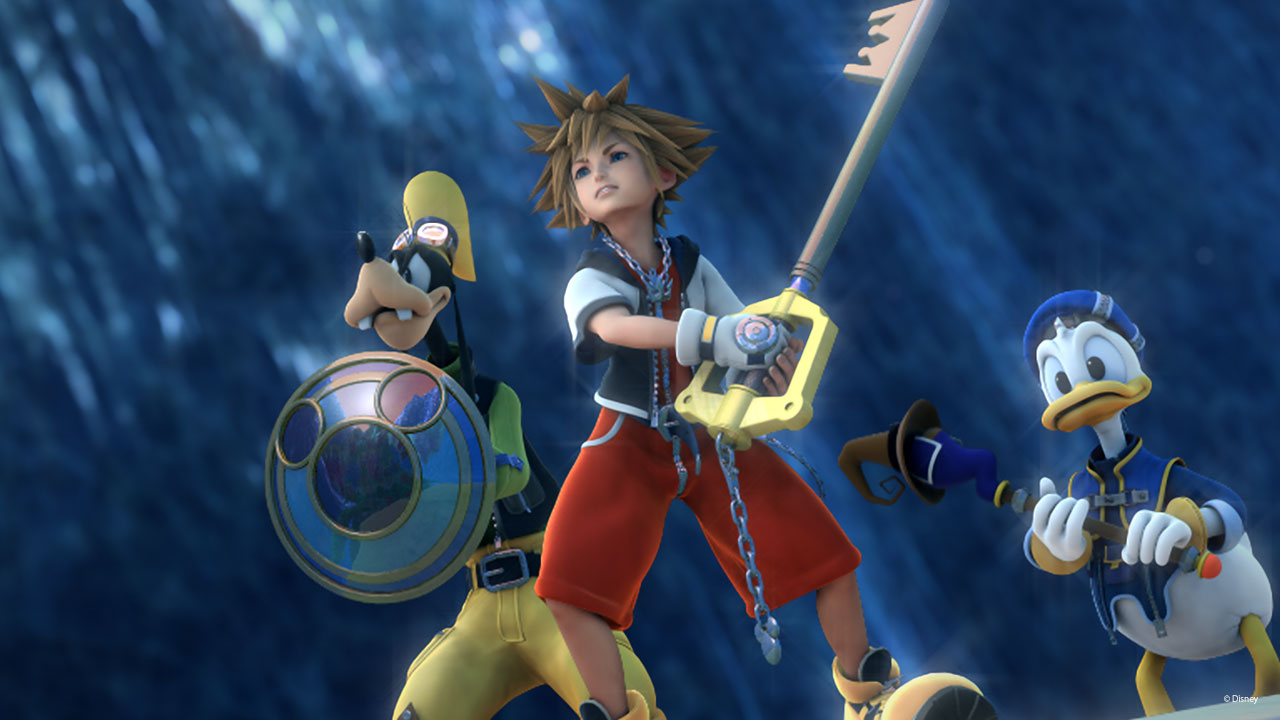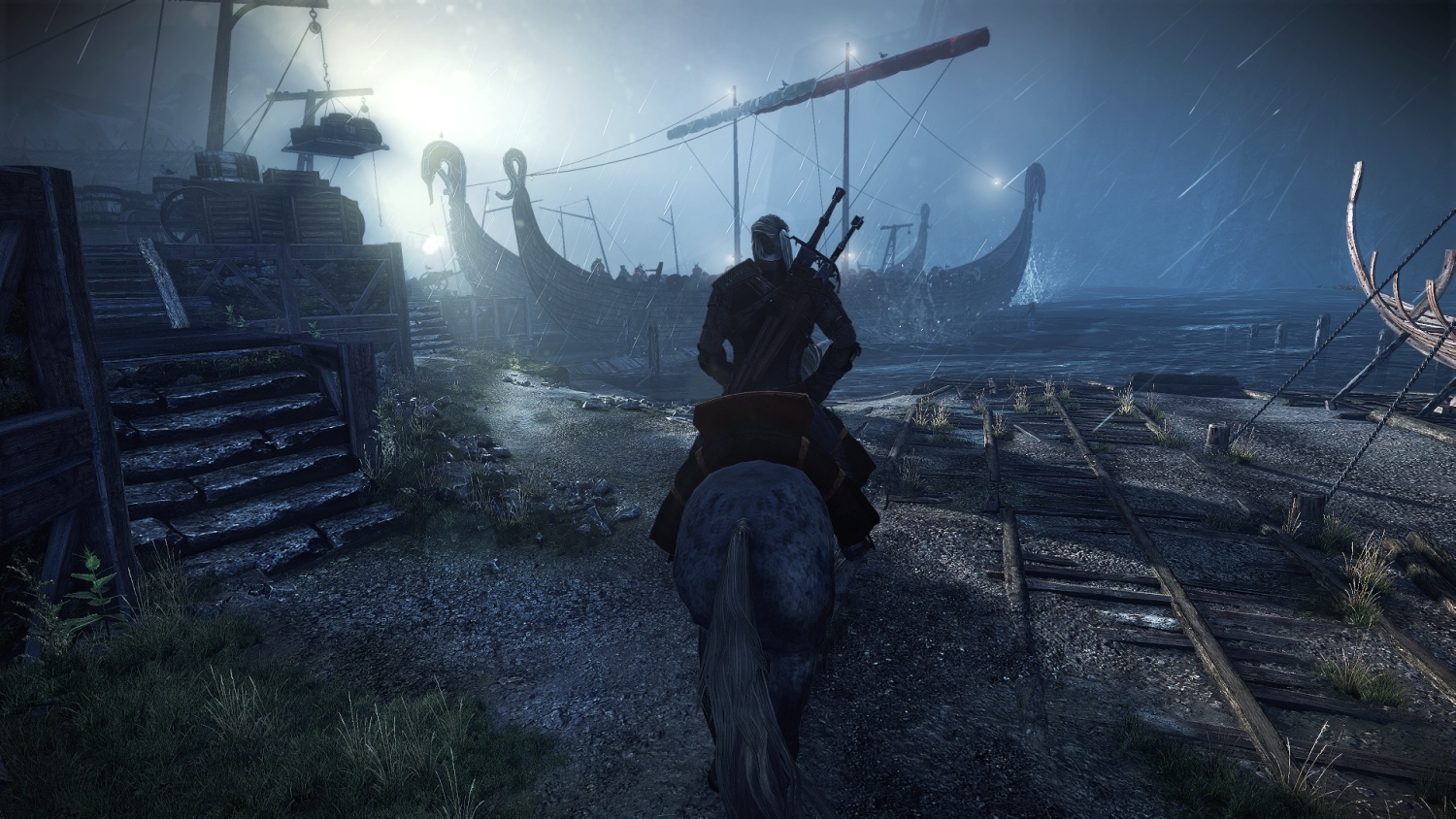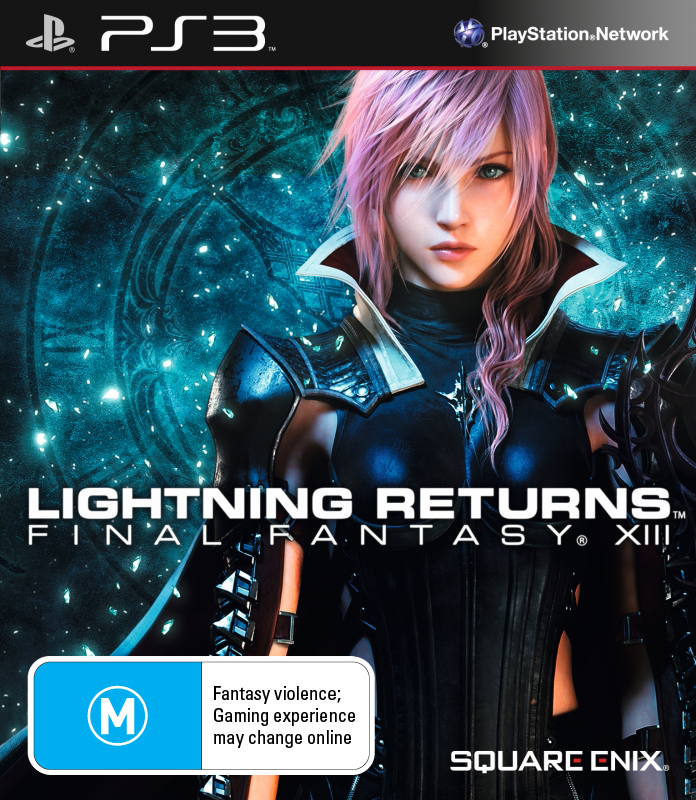
Lightning Returns: Final Fantasy XIII is Square-Enix’s last attempt to get the FFXIII saga right. While the first two games have plenty of fans, they are nonetheless widely regarded as among the weaker of the series – the first offering an extremely linear experience that could literally be played while reading a book (which I did), while the second served to convolute a bizarre plot even further. Lightning Returns tries to respond to every criticism lobbed at the previous games, and while it does succeed in some areas there are others which prove to just be unsalvageable.
Take Lightning herself, for instance. Our protagonist returns from crystal stasis 500 years after FFXIII-2 to find the end of the world as she knows it, literally. The world will end in 13 days, and God has chosen her as his official ‘Savior’ to save as many souls as possible before it does. In the past, Lightning has always been cold and distant, her stodgy monologues providing some of the most skippable in recent memory, and despite this game’s purported attempt to endear the character to us, it goes completely in the other direction. Lightning is a flat, monotone bore and the problem is that this time, it’s entirely intentional. So, now we have an unemotional protagonist wavering between showing mild interest in the proceedings and disdain for even being involved. It’s very difficult to make an audience care about such a character, although Lightning’s snark does occasionally provoke a chuckle or two. The story as a whole is somewhat more straightforward than it has been in the past, with a clear goal and clear threat in the form of the looming Chaos on the world, which is something at least.
Of more interest is the world Lightning now finds herself in. The FFXIII series has always fumbled its mythology and world-building, throwing weird terms like ‘l’Cie’ and ‘Gran Pulse’ and odd concepts at the player and leaving them to sort it all out in the Datalog menu. This game adds to the confusion, as there seems to be a never-ending hierarchy of gods and beings and turtles all the way down. As simply as I can explain it, the world has decayed to the point where only four areas are left – Luxerion, Yusnaan, the Wildlands and the Dead Dunes – known collectively as Nova Chrysalia. This is the game’s big innovation – an open world environment you’re allowed to explore at your leisure. The personality of these different environments and their quasi-immortal inhabitants is stronger than any previous game. Uncovering details about their history and culture, along with their distinct visual styles and the game’s really strong musical score, make exploring Nova Chrysalia one of the game’s highlights.
Lightning Returns’ open world has five main quests for you to conquer across the map, which can be tackled at any time and in any order, and which all must be completed to access the ending. However, there are a number of side quests with their own storylines to complete across the four areas, as well as the ‘Canvas of Prayers’, which lists hunt and fetch quests you can complete any time. Speaking of fetch quests, they do make up the dominant amount of missions across the game, in both subquests and Prayers (and even one main quest), as there’s always someone after three bags of goo, or five mechanical jockstraps, etc.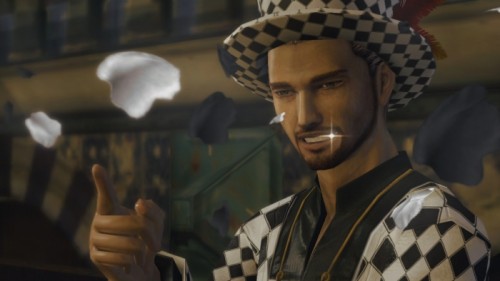
Central to Lightning Returns is a new time system. As the world counts down the final days to destruction, you are constantly told you have to manage your time carefully and that you can’t save everyone, so you’ll have to pick and choose your battles. Every day at 6AM you’ll have to stop what you’re doing and return to your base, and while you initially start with six days remaining, you can extend this to thirteen by completing main quests. This lends a great sense of urgency to your first few hours of the game, as you constantly sprint to get from one location to the other, not taking the time to stop and explore.
By the time you’ve played through a few days, however, you’ll have realized that urgency is all but gone. I completed all the main quests, along with over forty side quests within eight days, and I’m sure better JRPG players will manage to be faster than that. That leaves you a great deal of time to fart around as you wait for the world to end. It makes for strange pacing – the start of the game seems frustrating, as you always seem to be running out of the time, but by the end you’re literally wasting time as you try to look for things to do.
Grinding is out, as character progression has been completely overhauled in Lightning Returns. You no longer gain experience points from beating enemies – instead, Lightning gains attribute increases (Strength, Magic, HP) from completing quests. You can still gain valuable items and spells from downed foes, but a lot of the time you’ll find yourself flat-out avoiding enemies and escaping battles as an unwanted diversion. As time passes, the game automatically unlocks ‘EP’ abilities, which can be used to cure Lightning, perform Limit Break attacks or teleport around the globe. EP itself is gained by defeating enemies, making it more or less the sole reason you’d need to grind. However, the quest/reward system does provide a growing sense of satisfaction. You’ll be chuffed every time a ‘Quest Completed’ screen pops up knowing you’re on step closer to having an even more badass Lightning to use in all those battles unfortunately you’ll probably avoid.
That said, when you do get sprung by a randomly appearing enemy or have to throw down in a boss fight, the battle system has received a major change as well. Reminiscent of the Paradigm Shift system from the past, the new Schemata system allows you to customize three sets of equipment and commands for Lightning to switch between in battle. For instance, you can set-up one set with magic gear and commands to build a foe’s ‘Stagger’ meter, while the other two can be built with physical attacks or buffs and debuffs to take advantage of a Stagger status. Adornments such as hipster glasses, butterfly wings or plush toys can also be added to Lightning to customize her appearance to your liking (and open the door to future DLC).
Lightning goes solo in this new battle system, although she is occasionally joined by guest characters, but your control remains entirely with her. The real addition is a new ‘guard’ command that forces you to time blocks to lessen or cancel the effect of attacks. This does make combat a lot more interesting, especially in boss battles which can prove incredibly challenging (as well as some enemies which grow stronger the later you leave them in the game). However, if you’ve got the right command to take advantage of an enemy’s weakness (say, fire) or you have enough brute force, you really can still just hold down a button to win.
While CGI cutscenes are few and far between in this adventure, when they do appear they’re as crisp and detailed as we’ve come to expect from the Final Fantasy series. In-game is a slightly different story. While the four main areas of Nova Chrysalia all have their own personality and are filled with cool details and little nods, the Crystal Tools engine is showing its age. While reasonably steady in city environments, the frame rate really starts to chug once you’re out in the open Wildlands, and pop-in and draw distance become major concerns. Some quests require you to search out certain items or characters, which becomes a little maddening when they won’t even appear until they come within your limited field of rendering. Character models on main characters are still well detailed, but supporting NPCs and animals compare to the FFX-era visual quality.
There are things that Lightning Returns does right. The Nova Chrysalia world is more interesting than any presented to us in the past, the new battle system is more engaging and the developers’ willingness to experiment with the new character progression and time systems are appreciated. The problem is that the execution of the game as a whole is lacking. The Doomsday Clock concept is interesting, but throws off the pacing in the game. The character progression system relying on quests gives you a greater impetus to complete them, but undercuts the value of battles in general. Lightning as a ‘strong female protagonist’ is a good concept, but she’s a flatline in almost all dialogue. Unless you’re already engaged with the Final Fantasy XIII saga, there’s really not much of a reason to see its finale in Lightning Returns.
Detailed world | New battle system | Interesting gameplay ideas
Lightning's character | Convoluted story | Dated engine | Uneven execution of ideas

